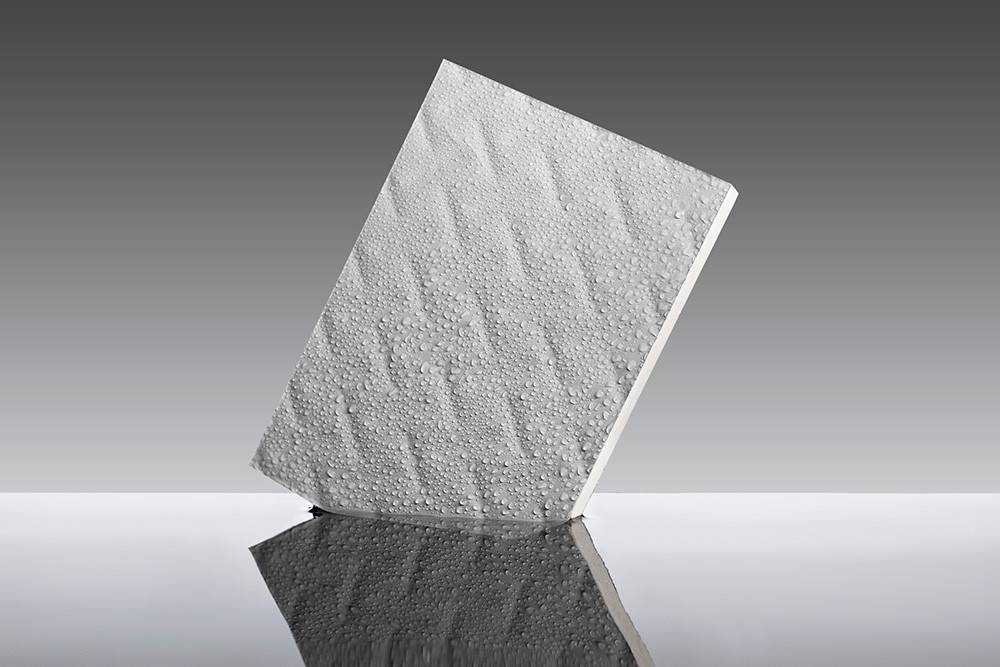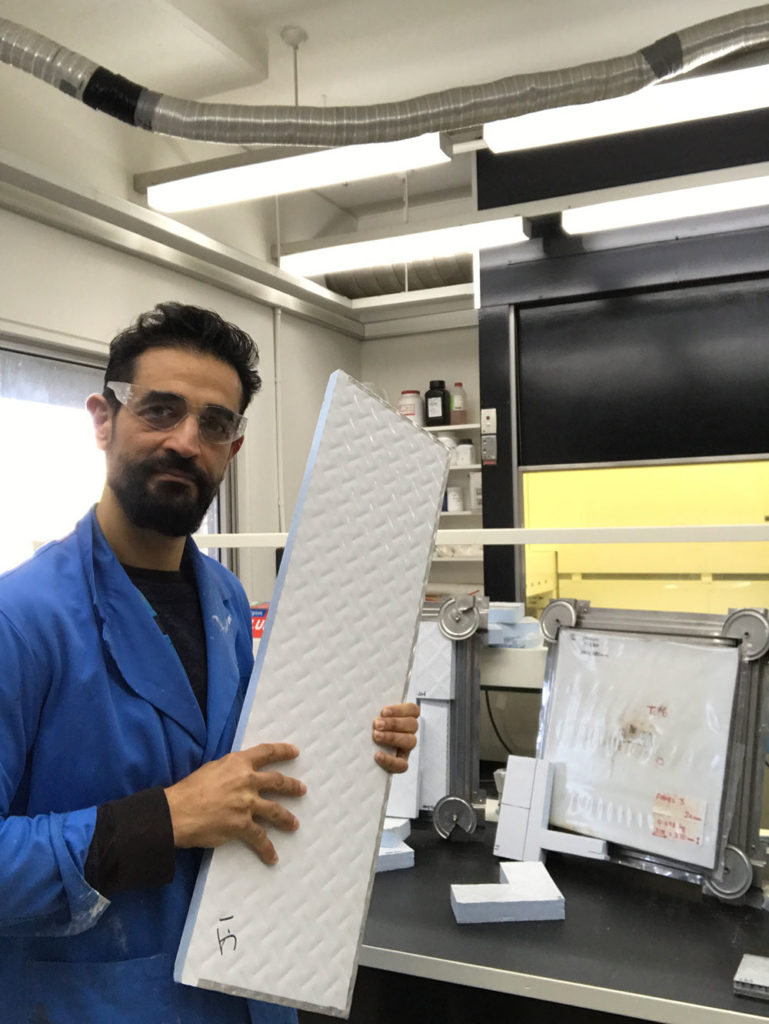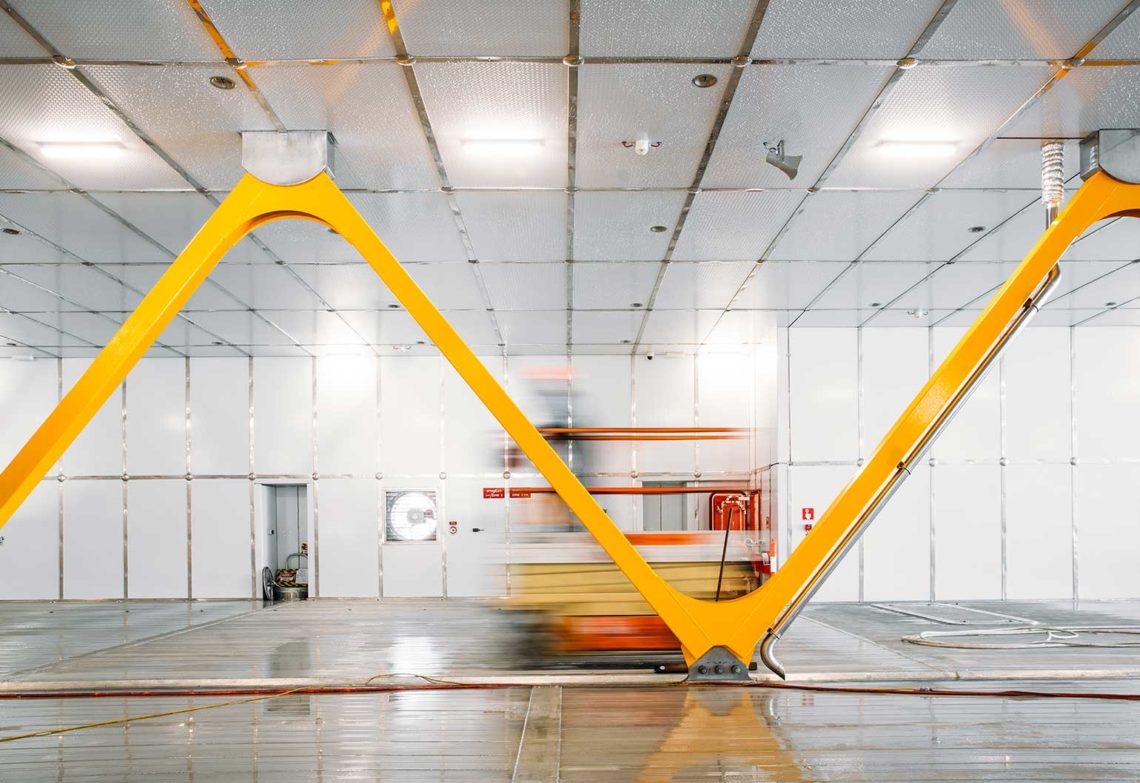A new lightweight, fire-resistant cladding developed in Australia could transform shipping, construction and aerospace.
CSIRO, in collaboration with Tasmanian manufacturing firm CBG Systems, produced the world-first prototype paneling, called Rapid Access Composite (RAC) Plus, which has already been installed on two ships.
Using a thermal protective coating that repels water and can withstand temperatures of more than 1000°C while remaining structurally stronger than conventional fire protection coatings, RAC Plus has been specifically designed for high-speed aluminium ships, but has the potential to be modified for construction products.
Mel Dell’Olio, Senior Experimental Scientist at CSIRO Manufacturing, told create that there was a need to develop a fire-resistant multi-functional material that could be practically applied by industry.
“CSIRO patented an invention called Hybrid Inorganic Polymer Systems (HIPS) in 2004. It involves integrating an inorganic aluminosilicate material with a small amount of organic material,” he said.

“This hybrid material satisfies the need to have fire-resistant properties, which comes from the inorganic side, along with enhanced mechanical properties such as adhesion, flexibility and ductility, which arises from the small organic components.”
Dell’Olio said that mini prototypes were created in a pilot project, with the iterations that demonstrated positive aspects such as fire resistance, mechanical strength, raw material accessibility and processing practicalities then selected for large-scale trials.
“The material is manufactured by applying a liquid HIPS resin in between several structural layers, comprised mostly of glass fibres, and then slightly compressing the multiple layered composite in a press at elevated temperature to cure or harden the resin, which enables all components to fuse into a complex system that has excellent strength and thermal and fire resistance,” he added.
Developing local industry
CSIRO’s partnership with CBG arose after the manufacturer took to Google in search of a resin system and came across the HIPS technology.
“CBG Systems had an idea of what structural components they wanted to use within the composite, after previous research programs with other organisations, but needed a robust resin to integrate fibres into a composite arrangement,” Dell’Olio said.
“After contacting CSIRO, CBG Systems was able to access government grants called Innovation Connections, through CSIRO support, which aims to assist small and medium businesses establish research priorities and fast-track R&D projects.”

Dell’Olio spent four months working at CBG in Hobart, to ensure employees were skilled in advanced manufacturing techniques. During this time the company produced 2500 insulation panels, which are being built into new ships.
Managing Director of CBG Javier Herbon said the fire protection performance of the product was unique.
“RAC Plus panels are designed to withstand 1000°C for one hour, while the protected structure does not rise above 140°C. Concurrent to the fire protection properties, the panels offer excellent thermal and noise reduction,” he said.
The panels are currently approved and used for marine insulation, but they have great potential in other areas.
“They can be used in the construction sector due to their excellent flexural strength, [they are] water repellent, they have non-fluorescence properties, non-combustible and they can work from both sides,” Herbon added.
Another feature of the material is its ability to reduce carbon emissions.
“Due to their excellent thermal properties, the panels contribute to reducing heating and cooling requirements on ships and buildings,” Herbon said.
The panels also weigh about half as much as traditional metal cladding, meaning a reduction in fuel consumption for ships.
CBG has already increased its staff as a result of the initial commercial orders, and has licensed the technology from CSIRO, enabling the firm to research other fields of application such as aerospace, for battery enclosures, and building construction in Australia’s most fire-prone areas.



